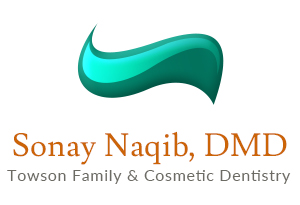FAQ
Q. How often should I see a dentist?
A. The American Dental Association (ADA) recommends visiting a dentist at least twice a year for a check-up and a professional cleaning. Our office also recommends a minimum of two visits per year.
Q. What do I do if I have a dental emergency?
A. Please call our office as soon as you determine that you have a dental emergency. If you have a dental emergency during regular business hours, we will be glad to work you into our schedule. After hours, over the weekend and during holidays, please call our office for the doctor's emergency contact number.
Q. What kind of toothbrush should I use?
A. Adults should use a small-to-medium size toothbrush with soft bristles. The head of the brush needs to be small enough to brush all areas of the mouth thoroughly, specifically the back of the mouth, which can be hard to reach. Children should use small toothbrushes with soft bristles. People with sensitive teeth can benefit from using gentle, soft bristled toothbrushes.
Q. How often should I replace my toothbrush?
A. The American Dental Association recommends that you replace your brush every 3 to 4 months. With each use, the bristles become worn and cleaning effectiveness decreases. Depending on your oral health, you may need to replace your brush sooner. Typically, children toothbrushes need to be replaced more regularly than adults.
Q. Is a powered toothbrush more effective than a manual toothbrush?
A. The electric toothbrush is recommended and does a more thorough job then a manual toothbrush. There are three main reasons the electric tooth brush is more effective. It allows you to remove plaque better, especially along the gum-line. They have built in timers helping you brush for the recommended two minutes. It also helps prevent wearing of the enamel due to hard brushing with a pressure control feature letting you know if you're brushing too hard. Children may find brushing with a powered toothbrush more exciting. If you have difficulty using a manual toothbrush, a powered toothbrush may be much more comfortable and easier to use.
Q. Should I brush or floss first?
A. As long as you brush and floss thoroughly, it does not matter if you brush then floss or floss then brush. However, flossing before brushing enables the fluoride in your toothpaste to better reach the areas between the teeth.
Q. Is one type of toothpaste better than the others?
A. No. However, we recommend you use a toothpaste that contains fluoride and carries the ADA Seal of Acceptance, which means it has been assessed for safety and effectiveness. Studies consistently show that fluoride helps strengthen and rebuild tooth structure, and helps prevent dental decay.
Q. What payment options are available for my dental treatment?
A. We accept cash, check, and all major credit cards. We will process your insurance claim for you upon receipt of your co-payment. We also offer outside financing through Care Credit. Care Credit is here to help you pay for treatments and procedures your insurance does not cover. Through Care Credit we can offer no interest financing and low monthly payments so you can get the treatment that you need, when you need it. Please feel free to ask our financial coordinator for details. You may apply for Care Credit at http://www.carecredit.com/apply/.
